FEATURE
Read like a seminary professor
MTSO faculty members recommend books that made an impact on their lives and work
Down in the Chapel: Religious Life in an American Prison
By Joshua Dubler
(2013)
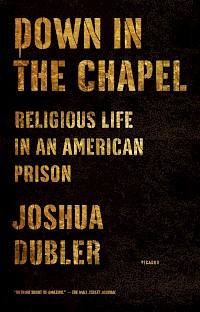 While a doctoral student in religious studies at Princeton, Joshua Dubler did fieldwork at Graterford Prison, spending hour after hour in the chapel with representatives of the various religious groups – Christian, Muslim and other – that used the facility. The result is a remarkably well-written and sensitive depiction of incarcerated men from a wide variety of backgrounds.
While a doctoral student in religious studies at Princeton, Joshua Dubler did fieldwork at Graterford Prison, spending hour after hour in the chapel with representatives of the various religious groups – Christian, Muslim and other – that used the facility. The result is a remarkably well-written and sensitive depiction of incarcerated men from a wide variety of backgrounds.
Dubler’s portrayal complicates all manner of stereotypes about religion in prison, especially the notion that jailhouse religion is somehow inauthentic or fraudulent. It is not that he is naïve. In fact, Dubler is quite willing to name self-deception when he sees it.
It’s rather that he shows us each incarcerated individual and each aspect of prison life from multiple perspectives – his own, of course, but also those of his key interlocutors and guides: a fundamentalist Christian; a Muslim black nationalist; a mainline Protestant chaplain; etc. He takes each of these men seriously, and none uncritically.
Perhaps most compelling of all is the way Dubler, who describes himself as “more or less a secular Jew,” allows the men at Graterford to interrogate his own assumptions about religion, including the theoretical constructs that he brought with him from Princeton.
This is one of the most moving and enlightening books I’ve read in years – and nothing at all like a doctoral dissertation.
Ryan Schellenberg
Associate Professor of New Testament
At the Dark End of the Street: Black Women, Rape, and Resistance – a New History of the Civil Rights Movement from Rosa Parks to the Rise of Black Power
By Danielle McGuire
(2010)
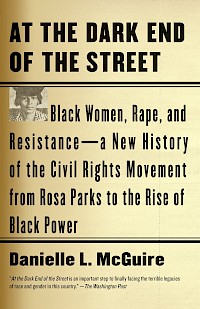 McGuire’s book has challenged me to become a better historian of the civil rights movement. Her work forces scholars and interested readers to rethink the narratives of major civil rights campaigns by demonstrating how everyday black women prepared their communities for activism by pressing charges against white men who had raped them.
McGuire’s book has challenged me to become a better historian of the civil rights movement. Her work forces scholars and interested readers to rethink the narratives of major civil rights campaigns by demonstrating how everyday black women prepared their communities for activism by pressing charges against white men who had raped them.
For example, McGuire unpacks Rosa Parks’ lengthy career as an investigator for the Alabama NAACP. From 1932 to 1955, Parks helped to secure legal representation for black boys wrongfully accused of raping white women, and black women who were raped by white men.
McGuire’s analysis of Parks’ work with the NAACP demonstrates that Parks was not “simply tired” on Dec. 1, 1955, the date she was arrested for civil disobedience on a segregated Montgomery bus. Rather, Parks was a seasoned activist who used her social status in the black community of Montgomery to become the symbol of respectability that black activists needed to galvanize the bus boycott.
McGuire’s study of Parks and several other black women has helped me to consider the stories behind the “Story” when I am researching civil rights histories.
Tejai Beulah
Coordinator of Partnerships and Black Church
and African Diaspora Specialization
Just a Sister Away: A Womanist Vision of Women's Relationship in the Bible
By Renita Weems
(1988)
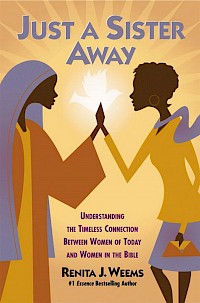 Renita Weems is the first African American woman to receive a Ph.D. in Old Testament in the U.S. Her book demonstrates that questions I have about God, about relationships, and about how to read the bible were shared and acted on by other black women who identified as feminist or as womanist, a term coined by the novelist and activist Alice Walker that refers to black feminists. Or, as Walker said: "feminist is to womanist as lavender is to purple."
Renita Weems is the first African American woman to receive a Ph.D. in Old Testament in the U.S. Her book demonstrates that questions I have about God, about relationships, and about how to read the bible were shared and acted on by other black women who identified as feminist or as womanist, a term coined by the novelist and activist Alice Walker that refers to black feminists. Or, as Walker said: "feminist is to womanist as lavender is to purple."
When Just a Sister Away came out, Weems expressly wrote it for women in the church, not the academy. Although it is not an academic book, I learned from it how to apply what I was learning in seminary to interpreting biblical texts and facing contemporary questions and challenges in a fresh way.
In some ways, this book set me on my path to become a biblical scholar who also preaches. I want my scholarship to be accessible, as this book was and is. It set me on my vocational journey.
I read everything Dr. Weems writes (and everything Alice Walker writes) to remind me that I can write with clarity and engage scholarship and the church at the same time.
Valerie Bridgeman
Dean
Vice President for Academic Affairs
As a Driven Leaf
By Milton Steinberg
(1939)
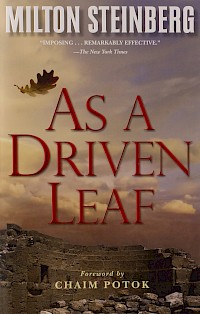 Of all my assigned readings as a seminary student, this book most moved me. In his foreword, Chaim Potok reported that although he had studied the Talmud since childhood, “nothing I ever heard or read before was able to bring the world of the rabbis so vividly to life for me as Milton Steinberg’s novel.”
Of all my assigned readings as a seminary student, this book most moved me. In his foreword, Chaim Potok reported that although he had studied the Talmud since childhood, “nothing I ever heard or read before was able to bring the world of the rabbis so vividly to life for me as Milton Steinberg’s novel.”
Since Rabbinic Judaism was my first academic love, I had similar feelings as I immersed myself in Steinberg’s fictionalized account of Rabbi Elisha ben Abuyah, an obscure figure mentioned in the Talmud, mostly with disdain.
Steinberg’s Elisha pursues a particular kind of certainty in faith, a set of logical proofs about God and morality analogous to the proofs of Euclid’s geometry. In his author’s note, Steinberg explains that the Euclidean angle is framed in modern, non-Euclidian ways. That is the point of the novel – it was written for those in our day who seek the same kind of logical proofs about God and morality.
You will have to discover for yourself where Elisha’s quest led him. The combination of superb storytelling and profound religious and philosophical issues makes As a Driven Leaf a memorable read.
Paul Numrich
Professor in the Snowden Chair for the Study
of Religion and Interreligious Relations
The Love of Learning and the Desire for God: A Study of Monastic Culture
By Jean Leclerq
(1960)
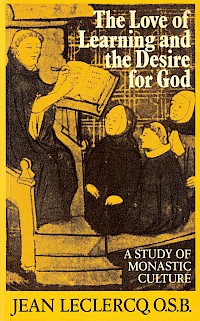 As a Benedictine and, more technically, a Cistercian monk, Father Jean Leclerq probes the origins, sources and fruits of a monastic culture. This monastic culture produced a monastic theology, which he distinguishes from a scholastic theology, in the way it elevates the endless quest for God – for the divine in our world.
As a Benedictine and, more technically, a Cistercian monk, Father Jean Leclerq probes the origins, sources and fruits of a monastic culture. This monastic culture produced a monastic theology, which he distinguishes from a scholastic theology, in the way it elevates the endless quest for God – for the divine in our world.
It is a great book for a seminary classroom, yet it’s written in an extremely clear and readable fashion. Leclerq was one of the first to give serious attention to notions of Christian spirituality and to reintroduce terms such as lectio divina, or divine reading.
The book is loaded with such gems as this observation: “The content of monastic culture has seemed to be symbolized, synthesized, by these two words: grammar and spirituality.” Here Leclerq notes the wonderful interplay of learning and the quest of the mind with a continual “striving to attain eternal life.”
Later the author returns to ideas of meditation and lectio with this admonition: “This repeated mastication of the divine words is sometimes described by use of the theme of spiritual nutrition.” Hopefully, you get the idea. Leclerq’s approach to spirituality is never cookie-cutter but rooted in the depths of monastic tradition and practice, which still have much to offer.
Jeffrey Jaynes
Professor in the Warner Chair of Church History
Director, Doctor of Ministry Program
The Ancient Jews from Alexander to Muhammad
By Seth Schwartz
(2014)
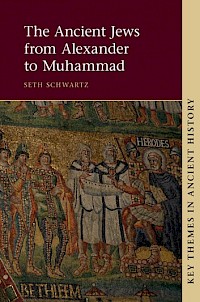 Seth Schwartz is a foremost historian of Jewish history of the Greek and Roman eras. In this brief history of 190 pages, he summarizes his vast research into this era. He also explains how he thinks about the challenges of writing a history when our information about it is piecemeal and fragmentary.
Seth Schwartz is a foremost historian of Jewish history of the Greek and Roman eras. In this brief history of 190 pages, he summarizes his vast research into this era. He also explains how he thinks about the challenges of writing a history when our information about it is piecemeal and fragmentary.
Most Christian ministers and students of the Bible do not have the opportunity to read a history of this very important period for the origin of Christian history from a Jewish historian of this stature. What is the significance in Jewish history of the Maccabean revolt just prior to the birth of Jesus? How did the rule of the Roman Empire affect Jewish life all around the Mediterranean? What about the Bar Kochba revolt a few years later in 132-135 A.D. when Jews were driven out of Jerusalem and Judea?
If we want to learn to read the New Testament without adopting the anti-Semitic interpretations that have plagued Christian interpretations of it, we have to begin by developing a more sophisticated understanding of the Jewish history of the period. This book provides a good starting point.
John Kampen
Distinguished Research Professor
What Are We Doing Here?
By Marilynne Robinson
(2018)
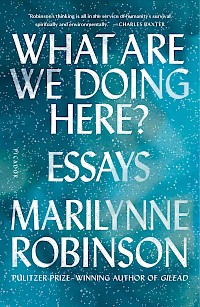 I first encountered Marilynne Robinson as an undergraduate, when I read her novel Housekeeping, which, to use her own words, beautifully manifested “that reservoir of goodness beyond and of another kind that we are able to do for each other in the ordinary cause of things.” Twenty-four years later, she published her next novel, Gilead, which focuses on the rich interior life of a rural pastor in Iowa.
I first encountered Marilynne Robinson as an undergraduate, when I read her novel Housekeeping, which, to use her own words, beautifully manifested “that reservoir of goodness beyond and of another kind that we are able to do for each other in the ordinary cause of things.” Twenty-four years later, she published her next novel, Gilead, which focuses on the rich interior life of a rural pastor in Iowa.
But in these times, I am turning to Robinson’s nonfiction, especially What Are We Doing Here?, a collection of essays firmly grounded in her Congregational theology (which is itself a fascinating and strangely generative mix of Calvin and Emerson). Each of the various essays calls for a reinvigoration of the selfless obligation and deep generosity that has in the past characterized American cultural and political life – and might yet again.
Robinson’s analysis is compelling: America is a country increasingly lost in the grips of fear. America is a country that for better or for worse identifies for the most part as Christian. And, “fear is not a Christian habit of mind.”
Susan Ritchie
Fully affiliated faculty in theology
Director, Unitarian Universalist House of Studies
Disciples of All Nations: Pillars of World Christianity
By Lamin Sanneh
(2008)
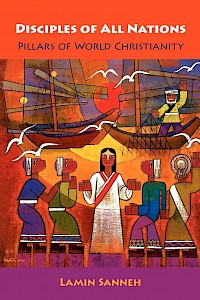 This book re-examines the historical and cultural movements of Christianity, especially on the African continent, from the vernacular angles of the non-Western contexts.
This book re-examines the historical and cultural movements of Christianity, especially on the African continent, from the vernacular angles of the non-Western contexts.
As a biblical scholar who values historiography highly, I have been profoundly informed and inspired by this book, which was one of the D.Min. course textbooks. Sanneh, a scholar from Gambia and professor at Yale until his unexpected passing early this year, provides authentic and insightful interpretations of Christianity that I have not precisely considered – for example, how the Bible has been a tool both for colonizing Africans and for giving them liberating voices, and the contrary ways the two famous missionaries Albert Schweitzer and David Livingstone treated and shared (or lacked) solidarity with Africans vis-à-vis slavery in their daily encounters.
Having been reluctant to find and construct my own voice in (Western-saturated) biblical interpretation, I have been challenged by Sanneh’s critical analyses, erudite presentations, and dialogical approaches that keenly probe questions from multiple perspectives and contexts – including my own Korean and Asian-American experiences. I recommend it to anyone interested in listening to new, fresh perspectives.
Paul Kim
Professor of Hebrew Bible
in the Williams Chair of Biblical Studies
Dakota: A Spiritual Geography
By Kathleen Norris
(1993)
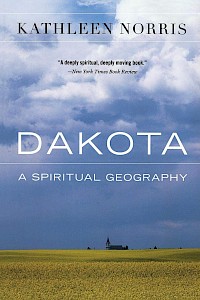 When Kathleen Norris, award-winning poet and author, inherited her grandmother’s house, she moved from the heady literary scene of New York City to Lemon, South Dakota, an isolated town on the North Dakota border. She found the pace, the demographics, the landscape, weather, spaces, sounds, even her spirituality were affected.
When Kathleen Norris, award-winning poet and author, inherited her grandmother’s house, she moved from the heady literary scene of New York City to Lemon, South Dakota, an isolated town on the North Dakota border. She found the pace, the demographics, the landscape, weather, spaces, sounds, even her spirituality were affected.
Encounters with Native Americans, her affiliation with a remote Benedictine abbey, and attending and sometimes preaching at the small village Presbyterian church all expanded and deepened her spirit. The starkness of Native American life, the monastic silence and the word-churning workings of her poet’s mind reshaped her life, her soul and her attentiveness to her spiritual geography.
She is also intensely aware of the weather, so interspersed among the chapters are “Weather Reports,” which are also commentaries on her new life and its current changes. I was deeply moved by the chapter “Deserts,” with the epigraph that asserts, “Dryness promotes the formation of flower buds…flowering is, after all, not an aesthetic contribution, but a survival mechanism.” Since I was in a particularly arid period of ministry, I found hope.
Norris’ other books have touched me deeply, but none as much as Dakota. Here she taught me through beautiful language and intense natural images to be aware of my location and my spiritual geography – and, as the cliché urges, to bloom where I am planted.
Tom Snyder
Adjunct faculty
The Missionary Movement in Christian History
and The Cross-Cultural Process in Christian History
By Andrew F. Walls
(1996 and 2002)
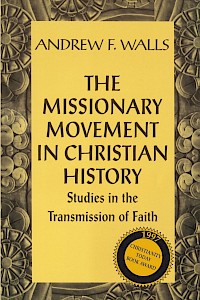 A former Scottish Methodist missionary to Sierra Leone and professor emeritus of the study of Christianity in the non-Western world at the University of Edinburgh, Walls is credited with calling attention to the massive demographic shift of Christianity toward the Global South. These two seminal books have been instrumental in challenging me to examine issues in Christian mission on terms set by non-Western Christianity.
A former Scottish Methodist missionary to Sierra Leone and professor emeritus of the study of Christianity in the non-Western world at the University of Edinburgh, Walls is credited with calling attention to the massive demographic shift of Christianity toward the Global South. These two seminal books have been instrumental in challenging me to examine issues in Christian mission on terms set by non-Western Christianity.
As Christianity is more and more associated with and marked by non-Western Christians, it is paramount for Western churches to listen to voices from the churches of the Global South. Walls rightly argues that “the study of Christian history and theology will increasingly need to operate from the position where most Christians are.”
What is required between the churches of the West and the Global South is hospitality grounded in equality and mutual respect, not dominance by the former. The two should come together in unity to make their witness credible and integral. According to Walls, what acutely concerns 21st century Christianity are issues of ecumenism – not confessional and denominational but multicultural and intercontinental: “The great ecumenical issues will be about how African and Indian and Chinese and Korean and Hispanic and North American and European Christians can together make real the life of the body of Christ.”
Joon-Sik Park
E. Stanley Jones Professor of World Evangelism
Director, Course of Study School of Ohio
Frederick Douglass: Prophet of Freedom
By David W. Blight
(2018)
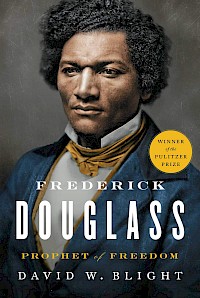 Winner of the 2019 Pulitzer Prize for History, Blight’s biography of Frederick Douglass, the foremost African American leader of the 19th century, delivers new insights and perspectives about slavery, the abolitionist movement and the constant struggle for human rights for African-Americans. Blight, recognized for his earlier book, Race and Reunion: The Civil War in American Memory, manages a formidable quantity of original letters, diaries etc., and he makes the story of his subject accessible and engaging.
Winner of the 2019 Pulitzer Prize for History, Blight’s biography of Frederick Douglass, the foremost African American leader of the 19th century, delivers new insights and perspectives about slavery, the abolitionist movement and the constant struggle for human rights for African-Americans. Blight, recognized for his earlier book, Race and Reunion: The Civil War in American Memory, manages a formidable quantity of original letters, diaries etc., and he makes the story of his subject accessible and engaging.
One comes away amazed at how Douglass survived his first 20 years as a slave, evolved intellectually without any formal education, became a leader of the national abolitionist movement, and played a key role in convincing Lincoln and other northern leaders to create regiments of free blacks in the Civil War. Blight’s emphasis on Douglass’ relationships with other historic figures such as William Lloyd Garrison, John Brown, Harriet Beecher Stowe, Susan B. Anthony, Booker T. Washington and Ida B. Wells contributes a valuable new panorama to the 19th century. Douglass’ story offers a profound understanding of why race and race relations continue as major issues in American life.
Paul Burnam
Director of the Library